Do you have a question about the Sony KDL-46HX755 and is the answer not in the manual?
Explains how to operate the TV using the remote control buttons.
Details the structure and categories within the Home Menu for navigation.
Guides on adjusting picture settings like brightness, contrast, and color.
How to access and use internet services and content on the TV.
Instructions on how to search for information within the i-Manual.
How to use the OPTIONS button for quick access to functions.
Instructions for experiencing 3D content and adjusting 3D settings.
How to switch input sources to connect and watch external devices.
Identifies and describes physical controls and indicators on the TV.
Details the controls and ports located on the front of the TV.
Details the controls and ports located on the right side of the TV.
Details the controls and ports located on the bottom of the TV.
Details the ports and connections located on the rear of the TV.
Explains the functions of the different buttons on the remote control.
How to select TV channels using the Home Menu or number buttons.
How to find programs and view the program guide information.
How to watch two pictures simultaneously on the screen.
How to display a main picture with a smaller inset picture.
How to watch two pictures side-by-side on the screen.
How to display current channel, program, or input information.
How to turn subtitles and closed captions on or off.
How to adjust the picture aspect ratio and screen format.
How to adjust sound settings like stereo, SAP, and mono.
Connect a BD/DVD player to the TV using an HDMI cable for optimal picture quality.
Connect a BD/DVD player using component video and audio cables.
Connect a BD/DVD player using composite video/audio cables.
Connect a digital camera or camcorder using an HDMI cable.
Play photo, music, and video files stored on a USB device.
Connect a PC to the TV for enjoying content.
Connect an audio system to the TV using HDMI for audio output.
Connect an audio system to the TV using an optical audio cable.
Connect an audio system to the TV using an audio cable.
Configure the TV to control connected HDMI devices with the TV remote.
Access the Sync Menu for controlling connected BRAVIA Sync devices.
Customize TV remote buttons to control connected HDMI devices.
View a list of connected devices compatible with Control for HDMI.
Select preset picture and sound settings suitable for the content.
Automatically adjust picture brightness based on ambient light to save power.
Save frequently used items like channels or inputs for quick access.
Reduce power consumption by adjusting the picture brightness.
Set the current time, on timer, or sleep timer for the TV.
Display photos from a USB device or network as a picture frame.
Set a 4-digit password for parental lock settings.
Lock events rated as unsuitable based on specified limits.
Block specific TV channels by their channel number.
Set up a wireless or wired connection to access the internet.
Browse websites directly on the TV when connected to the internet.
Enjoy on-demand video content from various internet services.
Access interactive content through downloadable applications (widgets).
Set up Skype for video calls by creating or using an existing account.
Make free video and voice calls to friends and family using Skype.
Search for information about music heard from the TV.
Search for music or videos using keywords.
Connect directly to Wi-Fi compatible devices without a router.
Display a photo with a map of the location where it was taken.
Play photo/music/video files stored on a PC via the home network.
Play media files from a controller on the TV screen.
View and deregister connected remote devices.
Control access permissions for specified controllers.
Configure advanced settings for the renderer function.
Choose which media servers appear in the Home Menu.
Troubleshoot connection issues with media servers.
Play media files directly from a controller on the TV.
Control the TV using a smartphone or PC app.
Adjust picture modes, screen size, and position for optimal viewing.
Adjust sound parameters like bass, treble, balance, and surround effects.
Manage TV channels, including signal checks, tuning, and blocking.
Configure information banner display and closed captions.
Adjust general TV operations like key tone, startup logo, and language.
Configure sound output to speakers, headphones, or audio systems.
Manage external device inputs, switching, and advanced settings.
Perform initial setup, check support info, and update TV software.
Solutions for issues related to the TV turning on or off automatically.
Troubleshooting steps for common picture and screen display problems.
Solutions for issues with receiving TV channels and signal quality.
Troubleshoot problems related to 3D picture display and glasses.
Solutions for issues concerning no sound, audio noise, or distorted audio.
Troubleshoot problems with connected external devices.
Solutions for issues with wireless LAN, internet connectivity, and apps.
Troubleshoot problems with server connections and media playback.
Solutions for issues when the remote control does not operate.
Explains how to operate the TV using the remote control buttons.
Details the structure and categories within the Home Menu for navigation.
Guides on adjusting picture settings like brightness, contrast, and color.
How to access and use internet services and content on the TV.
Instructions on how to search for information within the i-Manual.
How to use the OPTIONS button for quick access to functions.
Instructions for experiencing 3D content and adjusting 3D settings.
How to switch input sources to connect and watch external devices.
Identifies and describes physical controls and indicators on the TV.
Details the controls and ports located on the front of the TV.
Details the controls and ports located on the right side of the TV.
Details the controls and ports located on the bottom of the TV.
Details the ports and connections located on the rear of the TV.
Explains the functions of the different buttons on the remote control.
How to select TV channels using the Home Menu or number buttons.
How to find programs and view the program guide information.
How to watch two pictures simultaneously on the screen.
How to display a main picture with a smaller inset picture.
How to watch two pictures side-by-side on the screen.
How to display current channel, program, or input information.
How to turn subtitles and closed captions on or off.
How to adjust the picture aspect ratio and screen format.
How to adjust sound settings like stereo, SAP, and mono.
Connect a BD/DVD player to the TV using an HDMI cable for optimal picture quality.
Connect a BD/DVD player using component video and audio cables.
Connect a BD/DVD player using composite video/audio cables.
Connect a digital camera or camcorder using an HDMI cable.
Play photo, music, and video files stored on a USB device.
Connect a PC to the TV for enjoying content.
Connect an audio system to the TV using HDMI for audio output.
Connect an audio system to the TV using an optical audio cable.
Connect an audio system to the TV using an audio cable.
Configure the TV to control connected HDMI devices with the TV remote.
Access the Sync Menu for controlling connected BRAVIA Sync devices.
Customize TV remote buttons to control connected HDMI devices.
View a list of connected devices compatible with Control for HDMI.
Select preset picture and sound settings suitable for the content.
Automatically adjust picture brightness based on ambient light to save power.
Save frequently used items like channels or inputs for quick access.
Reduce power consumption by adjusting the picture brightness.
Set the current time, on timer, or sleep timer for the TV.
Display photos from a USB device or network as a picture frame.
Set a 4-digit password for parental lock settings.
Lock events rated as unsuitable based on specified limits.
Block specific TV channels by their channel number.
Set up a wireless or wired connection to access the internet.
Browse websites directly on the TV when connected to the internet.
Enjoy on-demand video content from various internet services.
Access interactive content through downloadable applications (widgets).
Set up Skype for video calls by creating or using an existing account.
Make free video and voice calls to friends and family using Skype.
Search for information about music heard from the TV.
Search for music or videos using keywords.
Connect directly to Wi-Fi compatible devices without a router.
Display a photo with a map of the location where it was taken.
Play photo/music/video files stored on a PC via the home network.
Play media files from a controller on the TV screen.
View and deregister connected remote devices.
Control access permissions for specified controllers.
Configure advanced settings for the renderer function.
Choose which media servers appear in the Home Menu.
Troubleshoot connection issues with media servers.
Play media files directly from a controller on the TV.
Control the TV using a smartphone or PC app.
Adjust picture modes, screen size, and position for optimal viewing.
Adjust sound parameters like bass, treble, balance, and surround effects.
Manage TV channels, including signal checks, tuning, and blocking.
Configure information banner display and closed captions.
Adjust general TV operations like key tone, startup logo, and language.
Configure sound output to speakers, headphones, or audio systems.
Manage external device inputs, switching, and advanced settings.
Perform initial setup, check support info, and update TV software.
Solutions for issues related to the TV turning on or off automatically.
Troubleshooting steps for common picture and screen display problems.
Solutions for issues with receiving TV channels and signal quality.
Troubleshoot problems related to 3D picture display and glasses.
Solutions for issues concerning no sound, audio noise, or distorted audio.
Troubleshoot problems with connected external devices.
Solutions for issues with wireless LAN, internet connectivity, and apps.
Troubleshoot problems with server connections and media playback.
Solutions for issues when the remote control does not operate.

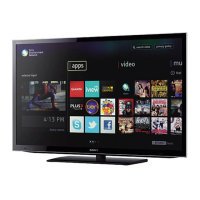
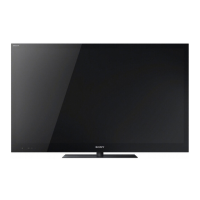


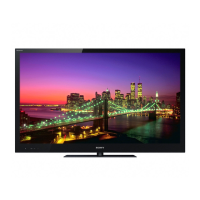


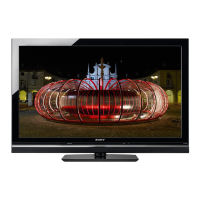
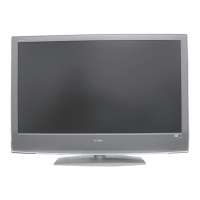


